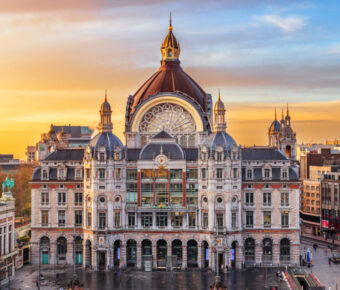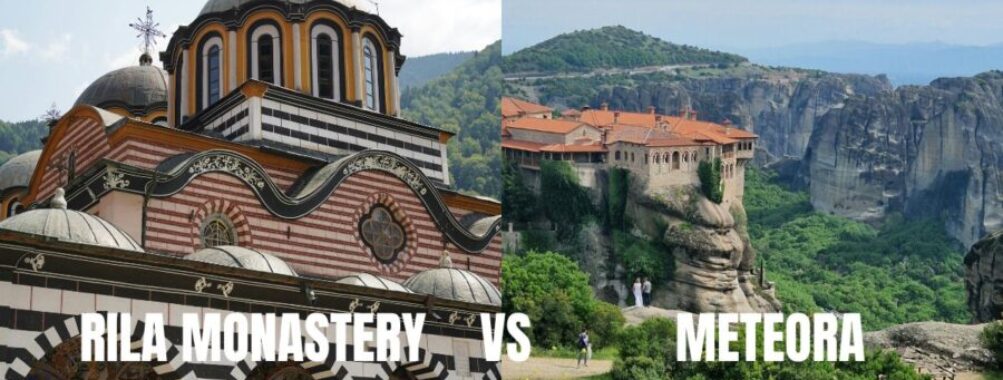
Rila Monastery vs Meteora: 7 Key Differences & Travel Tips Revealed
Picking between Bulgaria’s Rila Monastery and Greece’s Meteora isn’t exactly straightforward. If you want a quick answer, Rila gives you one deeply historic monastery, while Meteora stuns with six cliff-top monasteries scattered across a surreal landscape. Both have UNESCO status, both serve as spiritual centers, but honestly, the vibe at each couldn’t be more different.
Rila nestles deep in the Rila Mountains, quiet and fortress-like, and you can feel how it’s woven into Bulgarian history. Meteora, meanwhile, shoots up from sandstone pillars near Kalambaka, with monasteries that almost float between earth and sky. I’ve wandered through both, and the contrast is so sharp—it’s what makes this comparison so intriguing.
Trying to decide which to visit? Maybe you’re tempted by both. It really depends on what you crave: a single masterpiece of Bulgarian heritage or a cluster of otherworldly sanctuaries in Greece. Either way, you’ll end up with stories worth telling.
Table of Contents
- Key Takeaways
- Rila Monastery vs Meteora: Quick Comparison
- Location and Accessibility
- Historical Significance
- Architectural Highlights
- Exploring Meteora’s Monasteries
- Great Meteoron Monastery
- Varlaam Monastery
- Holy Trinity Monastery
- Rousanou Monastery
- Additional Monasteries and Local Insights
- St. Nicholas Anapausas Monastery
- Kalambaka and Surroundings
- Visiting Meteora: Practical Tips
- Dress Code and Etiquette
- Best Time to Visit
- Traveling Between Athens, Rila Monastery, and Meteora
- Transportation Options
- Suggested Itineraries
- Unique Experiences: Rila Monastery and Meteora Compared
- Spiritual Atmosphere
- Scenic Landscapes
- Frequently Asked Questions
- What are the architectural differences between Rila Monastery and Meteora?
- How does the historical significance of Rila Monastery compare to that of Meteora?
- Can you highlight the unique cultural experiences available at Rila Monastery and Meteora?
- What are the accessibility considerations for visiting Rila Monastery and Meteora?
- Could you list the accommodations available near Rila Monastery and Meteora for overnight stays?
- What is the best time of year to visit Rila Monastery and Meteora for optimal weather and visitor experience?
- Book Your Dream Experience
- More Travel Guides
Key Takeaways
- Rila is a one-of-a-kind historic monastery with deep cultural roots.
- Meteora features six monasteries perched on towering rocks.
- The travel experience at each is wildly different.
Rila Monastery vs Meteora: Quick Comparison
Both Rila Monastery in Bulgaria and Meteora in Greece offer jaw-dropping views, rich history, and architecture you won’t soon forget. But the experiences? Couldn’t be more different. One feels hidden away and almost untouched, while the other sprawls across dramatic cliffs that command the whole valley.
Location and Accessibility
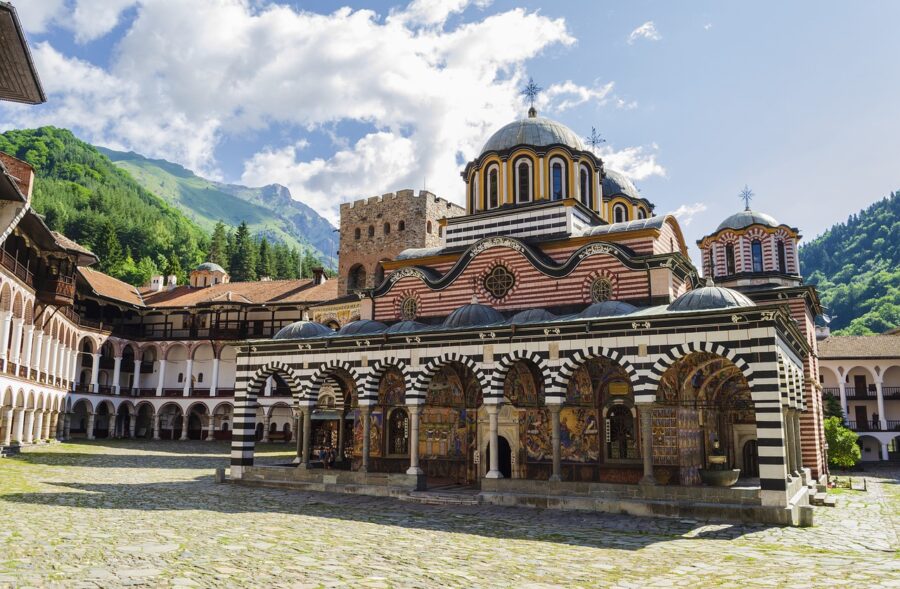
You’ll find Rila Monastery high in Bulgaria’s Rila Mountains, about a two-hour drive from Sofia. The road twists through thick forests and sleepy villages, so honestly, getting there is half the fun. Public buses run from Sofia, but they don’t offer much flexibility if you want to linger or wander.
Meteora rises above the plains of Thessaly in central Greece. Kalambaka is the nearest town, with a train station connecting straight to Athens and Thessaloniki. From there, you can catch local buses, grab a taxi, or just hike between monasteries if you’re feeling adventurous.
If steep hikes aren’t your thing, Rila is a breeze once you arrive—it’s a single, flat complex with open courtyards. Meteora, though, means more walking and plenty of stairs since the six active monasteries sit on separate rock pillars. Still, the views you get from those Meteora trails? Absolutely worth every step.
Historical Significance
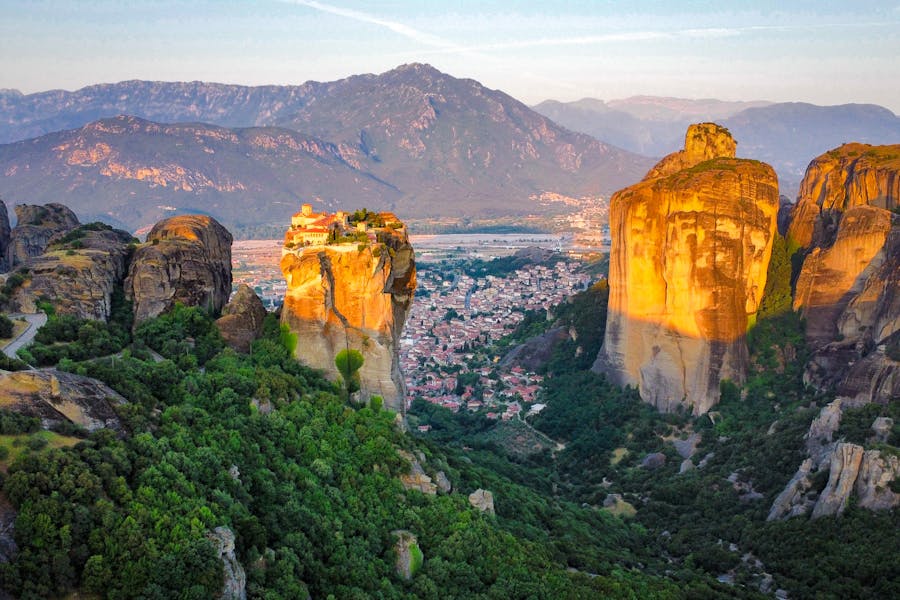
St. Ivan of Rila, Bulgaria’s patron saint, founded Rila Monastery in the 10th century. Over the centuries, it became a spiritual and cultural anchor, especially during the Ottoman era, keeping Bulgarian identity alive through art, manuscripts, and education. For Bulgarians, this isn’t just a monastery—it’s a symbol of who they are.
Meteora’s monasteries came much later, starting in the 14th century. Monks climbed those wild cliffs to escape invasions and chaos down below. At its height, Meteora had 24 monasteries; today, six remain active. The story here is all about resilience—monks literally hauled up supplies in rope baskets, clinging to faith and survival.
Both places made UNESCO’s World Heritage list, but they stand for different things. Rila embodies Bulgaria’s unbroken faith and culture, while Meteora shows how isolation and wild geography shaped Greek monastic life.
Architectural Highlights
Rila Monastery grabs your attention with bold stripes and symmetry. Black-and-white arcades, vivid frescoes, and thick stone walls give it a fortress feel, but there’s artistry everywhere. The central church, with its golden domes and murals, is honestly one of the most photographed spots in Bulgaria.
Meteora’s architecture feels wilder, more scattered. Each monastery looks like it just grew out of the cliffs. Step inside and you’ll find chapels packed with post-Byzantine frescoes—especially in the Great Meteoron and Varlaam Monasteries. This Meteora guide dives deeper if you’re curious.
If you love ornate detail, Rila’s polish might win you over. But if dramatic settings call your name, Meteora’s sky-high sanctuaries will have you staring in awe. It comes down to whether you want one grand complex or a collection of cliffside retreats.
Exploring Meteora’s Monasteries
Meteora balances history, faith, and landscapes so wild they barely seem real. Each monastery brings something unique—maybe it’s the art, the scale, or just the view from the edge.
Great Meteoron Monastery
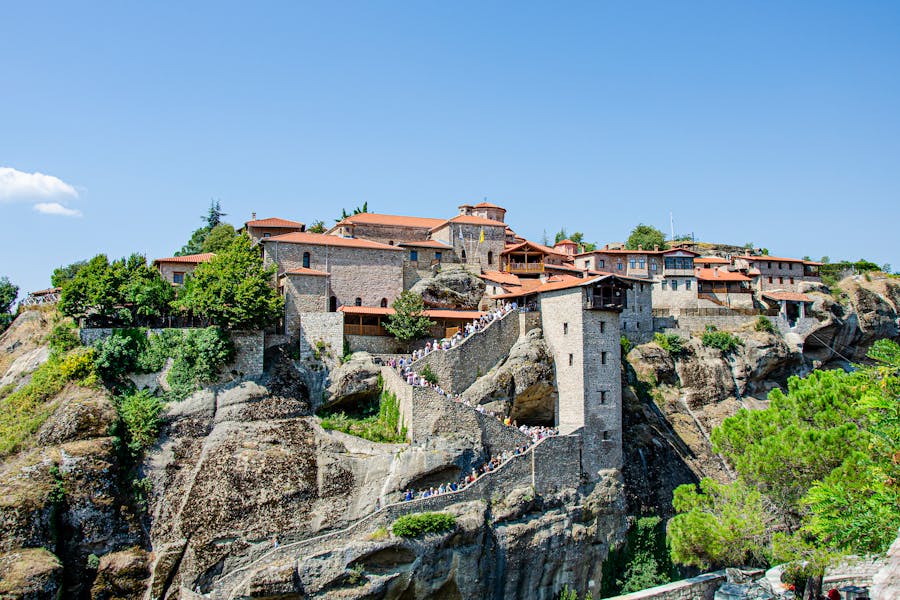
The Great Meteoron Monastery sits atop the highest rock in Meteora, and it’s the oldest one, too. Saint Athanasios founded it in the 14th century, and it quickly became the heart of monastic life here.
Step inside and the scale hits you—spacious courtyards, several chapels, and halls that feel like a museum of religious treasures. The frescoes? Some go back centuries, full of scenes from the Byzantine era. The main church, dedicated to the Transfiguration of Christ, is especially stunning with its intricate iconography.
But be ready for the climb. You’ll face over 300 steps to get up there, and in summer it can be a challenge. Once inside, though, the mix of history and art makes it all worthwhile. Travel Notes and Beyond has more details if you want to dig deeper.
Varlaam Monastery
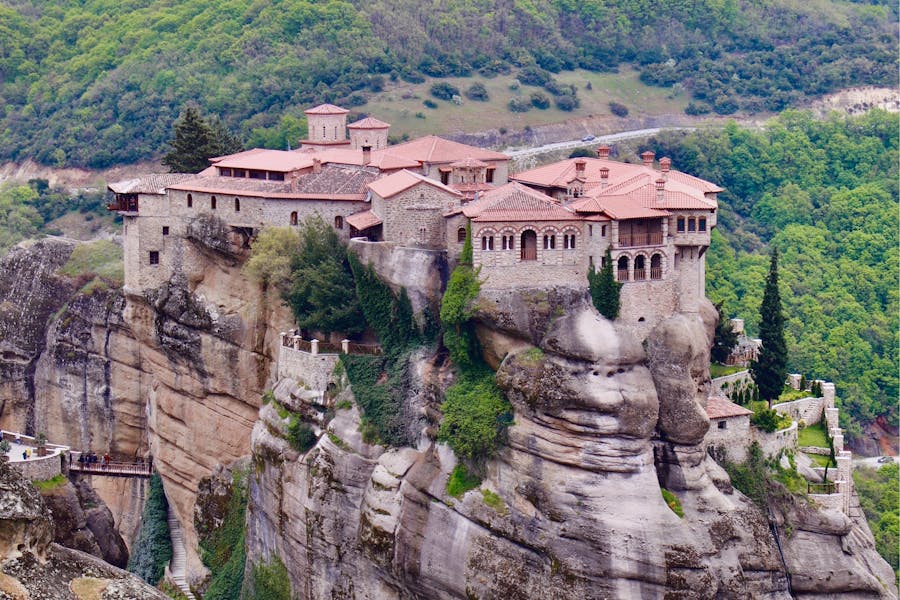
Right across from Great Meteoron, Varlaam Monastery feels a bit more approachable but still fascinating. A hermit named Varlaam started it, but two brothers in the 16th century turned it into the place you see now.
The standout here? Frescoes by Frangos Kastellanos, a big name in iconography back then. The main church bursts with his vivid work, which still pops with color after all these years.
The climb to Varlaam is a little easier—about 195 steps. You’ll find cozy terraces and gardens perfect for catching your breath. Inside, the museum displays manuscripts, relics, and other treasures. If you want a quieter spot than Great Meteoron, this one’s a solid pick. Explore with Cassie covers it in more detail.
Holy Trinity Monastery
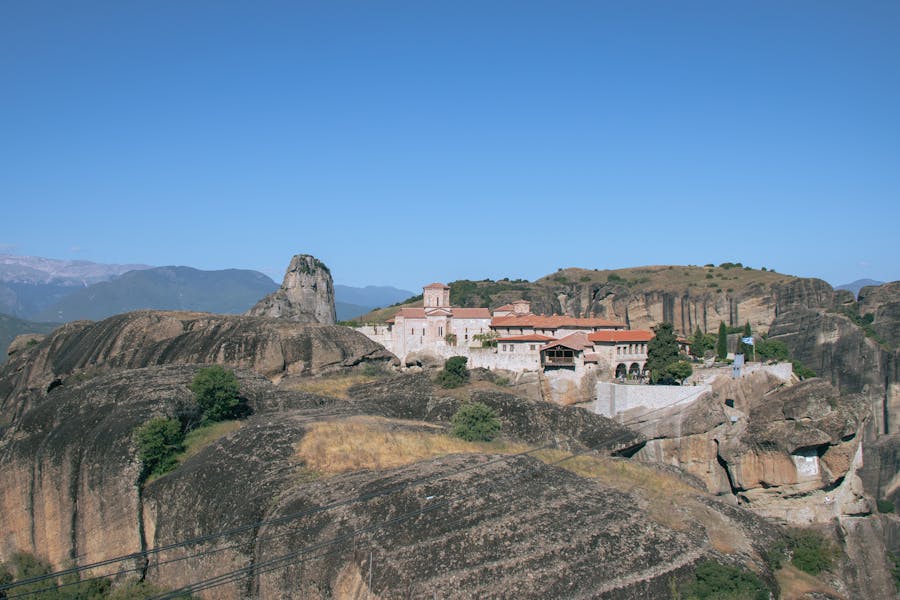
Holy Trinity Monastery probably wins the “most photographed” award, partly because it appeared in a James Bond movie. But honestly, the views from up here are reason enough to visit.
The monastery perches on a steep cliff, and getting there takes some determination. The path twists up through rock and forest—it’s not easy, but reaching the top feels like a victory.
Inside, you’ll find a tiny church with 15th-century frescoes and a peaceful courtyard. It’s often less crowded than the bigger monasteries, which makes it even better in my book. The panoramic valley views are unforgettable.
Rousanou Monastery
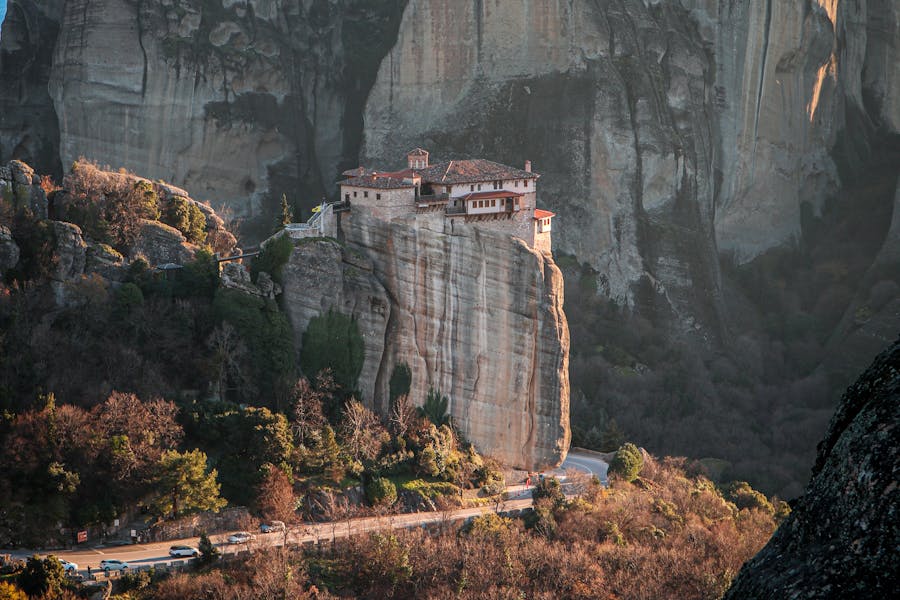
Rousanou Monastery stands out because nuns, not monks, run it. It’s smaller and feels more intimate, balanced on a narrow rock that barely seems big enough for a building.
The convent honors St. Barbara, and the chapel inside glows with lovely frescoes. The nuns keep the gardens blooming, softening the stark rock with color and life.
Getting here is easier than most—you just cross a small bridge, no endless stairs. The terrace offers wide views across the valley and toward the ruins of other monasteries. Many visitors say Rousanou feels the most personal and welcoming. Greece Tours has more if you’re curious.
Additional Monasteries and Local Insights
If you venture beyond the famous monasteries, you’ll stumble on smaller gems and towns that reveal more of local life. These places might not dazzle with grandeur, but they’re full of stories you’d never hear if you just hit the highlights.
St. Nicholas Anapausas Monastery

St. Nicholas Anapausas is usually the first monastery you spot as you enter Meteora. It clings to a slim rock, almost as if it’s squeezed in place. Space is tight, but that’s part of its charm.
Inside, you’ll find 16th‑century frescoes by Theophanes Strelitzas, a famed Cretan artist. The compact space lets you get up close, spotting details you’d miss in larger churches.
I remember hauling myself up the short, steep staircase to the entrance and thinking, “This feels more personal.” You dodge the crowds here, so you can actually sit quietly and soak up the atmosphere.
If you’re pressed for time, you might skip it—but honestly, don’t. The small scale helps you appreciate the artistry and devotion poured into its creation. Not every monastery aimed to impress with size; sometimes, it’s about preserving faith in the simplest ways.
Kalambaka and Surroundings
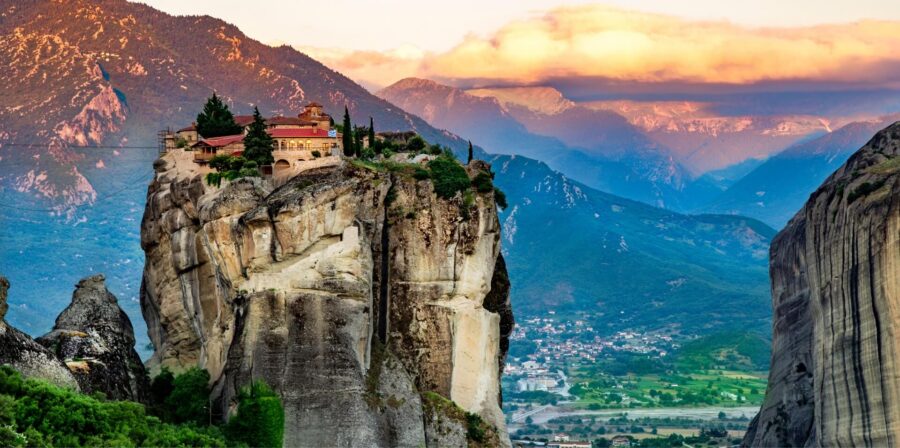
Kalambaka nestles right at the base of Meteora, and most travelers stay here before heading up to the monasteries. The town isn’t huge, but you’ll find everything you need—restaurants, guesthouses, and plenty of shops selling icons, honey, and local wine.
I loved wandering the back streets in the evening. You’ll spot old men playing backgammon outside cafés, and you can grab a plate of grilled lamb or moussaka without breaking the bank. If you want something quieter, the nearby village of Kastraki feels more traditional and sits even closer to the rocks.
From Kalambaka, you can jump on hiking trails that zigzag up to the monasteries. Some follow old footpaths monks used for centuries, so you catch a glimpse of what daily life was like before roads and buses. If you’re into photography, sunrise and sunset from the town’s edges give you some of the best views of Meteora’s cliffs.
Stay at least one night here if you can. The town may not be as famous as the monasteries, but it ties the whole trip together. You see how faith, history, and everyday life mix in a place that still feels lived-in, not just visited.
Visiting Meteora: Practical Tips
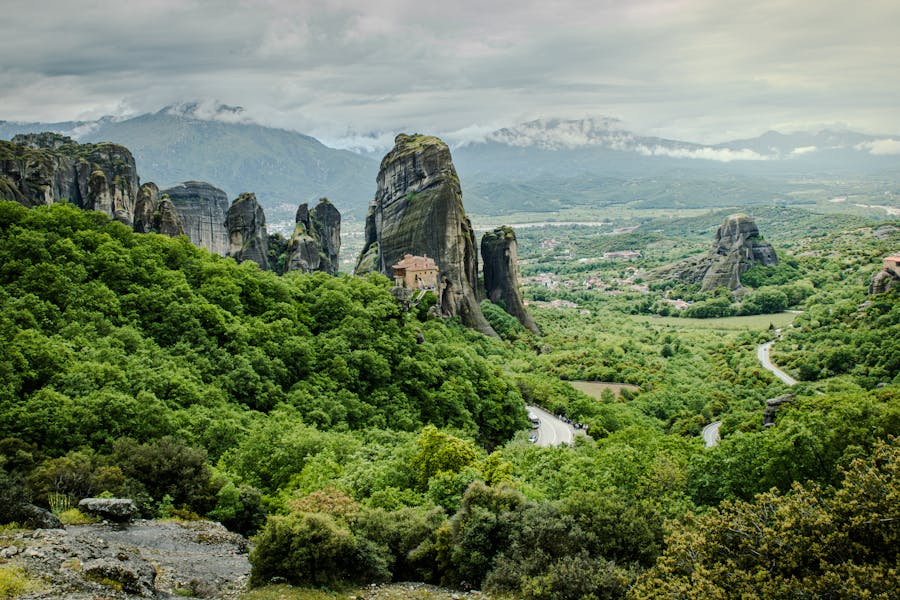
A bit of planning goes a long way when you head to Meteora. The monasteries have their own set of rules, and timing your visit can seriously shape your experience.
Dress Code and Etiquette
Meteora’s monasteries are active religious sites, so modest clothing isn’t just suggested—it’s required. Men need long pants, and women must wear long skirts that cover the knees. Pants on women? Nope, not allowed. Some monasteries lend skirts at the entrance if you forget. Everyone needs to cover their shoulders, too.
I’ve watched plenty of people get turned away at the door for showing up in shorts or sleeveless tops. It’s awkward and totally avoidable. A lightweight scarf or wrap works wonders in summer. Just toss it in your bag with your other essentials, or pick up some travel gear before your trip.
Inside the churches, don’t try sneaking photos. Guards keep an eye out and will call you out if you pull out your phone. Just tuck it away and take in the frescoes with your own eyes. It’s a small sign of respect—and honestly, the memory lasts longer than a photo ever could.
Best Time to Visit
Meteora stays busy most of the year, especially when the tour buses start rolling in by mid-morning. If you want a little peace, show up right when the monasteries open or swing by later in the afternoon after the crowds thin out.
I’ve tried both and honestly, the contrast is wild—you’ll hear the wind, not just a wall of voices.
Winter brings far fewer crowds, though you’ll need to brace for chilly weather. Summer, on the other hand, means longer days, more heat, and a lot more people.
If you’re chasing photos, sunrise and sunset are just magic. The cliffs light up, and you’ll have those epic viewpoints almost to yourself.
Not into planning every detail? You can always book a guided Meteora tour. It saves time and you’ll pick up more history than you would wandering solo.
But if you’re up for driving or hiking, going on your own means you can linger wherever you want.
Traveling Between Athens, Rila Monastery, and Meteora
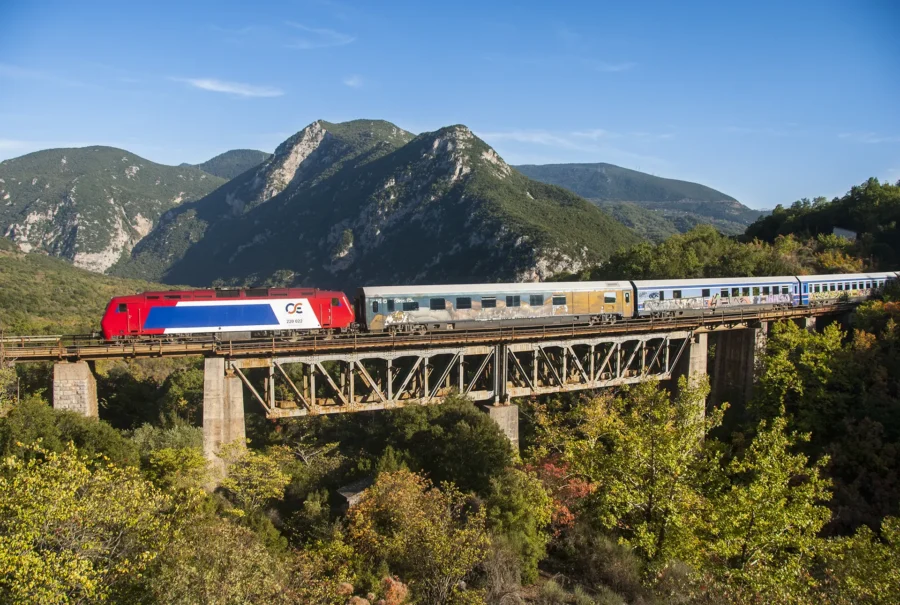
Traveling between Athens, Meteora, and Rila Monastery takes a bit of planning since you’re crossing from Greece into Bulgaria. The real trick is balancing travel time with what you actually want to see.
How much time do you have? That’s usually what decides it.
Transportation Options
The easiest way from Athens to Meteora is by train to Kalambaka—about 4.5 to 5 hours. The train is pretty reliable, though sometimes you’ll need to hop on a bus for a stretch.
You can also drive, and the road distance clocks in at around 360 km.
Getting from Meteora to Rila Monastery is a little trickier. There’s no direct train or bus, so most people end up renting a car or booking a private transfer.
By car, it’s roughly 5–6 hours, crossing the border into Bulgaria.
If you’re open to mixing things up, flying can save you time. You might search flights from Athens to Sofia, then drive or bus to Rila Monastery in under 2 hours.
If your days are limited, this combo often makes the most sense.
Suggested Itineraries
With just a few days, I’d recommend Athens → Meteora → Athens. Meteora works as a long day trip, but staying overnight in Kalambaka lets you catch sunrise or sunset at the monasteries.
If you’ve got a week, try Athens → Meteora → Rila Monastery → Sofia. Start with the train to Meteora, rent a car for the cross-border drive, and wrap up in Sofia before flying home.
If you’re lucky enough to have more time, you could add Delphi or Thessaloniki before heading north. I once did Athens → Delphi → Meteora, then crossed into Bulgaria. It was a lot of driving, but honestly, it gave me a taste of both countries without feeling rushed.
Unique Experiences: Rila Monastery and Meteora Compared
Rila Monastery in Bulgaria and Meteora in Greece each offer something wildly different. One pulls you into quiet reflection deep in the mountains, while the other leaves you standing on cliffs with views that barely seem real.
Spiritual Atmosphere
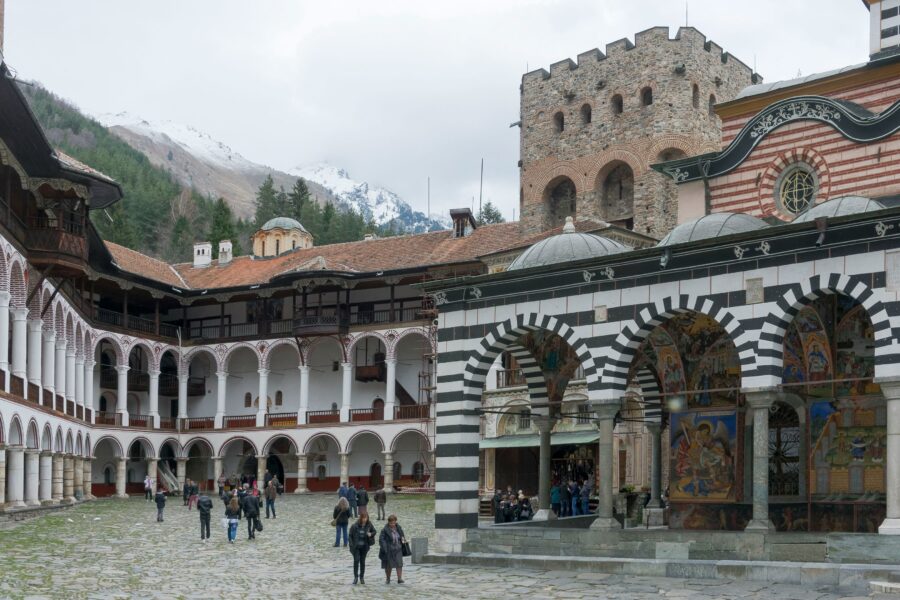
At Rila Monastery, calm settles over you the second you walk through the gates. The courtyard is wrapped in arched balconies, and the painted frescoes tell stories that somehow still feel alive.
You’ll catch the rhythm of daily prayers, the faint incense in the air, and that weird sense that time just slows down here.
You can even stay overnight in the monastery’s simple guest rooms. Waking up before the crowds roll in gives you a rare, quiet look at monastic life.
It’s almost too quiet, but honestly, that’s the magic of it—you’re meant to slow down.
Meteora comes at you with pure drama. The monasteries perch on giant rock pillars, and back in the day, monks climbed up on ladders and ropes.
Even now, climbing the steps feels like a mini-pilgrimage.
Inside, you’ll find chapels packed with icons and frescoes, but the setting itself carries a spiritual weight you can’t ignore.
If you want to dig deeper, join a guided day trip that mixes in nearby cultural stops. Booking organized tours and activities can help you connect the dots between faith, history, and the region’s living traditions.
Scenic Landscapes
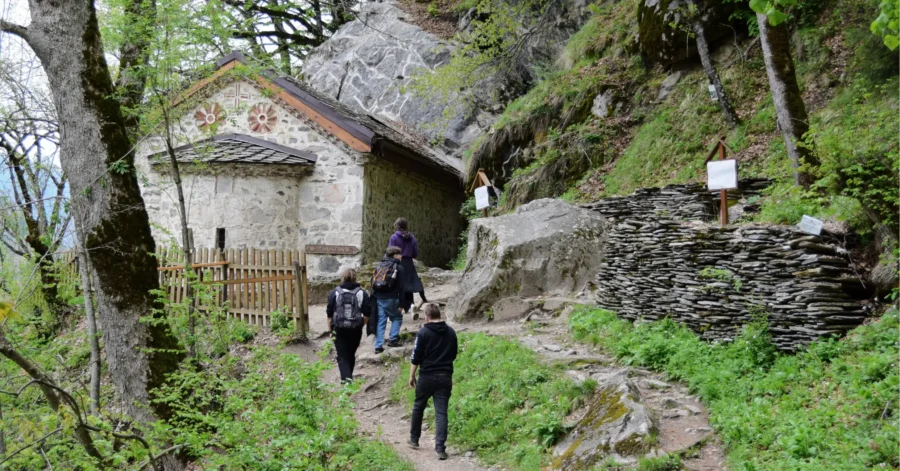
Rila Monastery sits tucked in the Rila Mountains, surrounded by pine forests that seem barely touched by time. The air is crisp, and if you wander a bit, you’ll find hiking trails that lead to waterfalls and the cave of St. Ivan Rilski.
It’s the kind of place where your own footsteps echo.
The setting makes the monastery feel hidden, almost protected from the world. Maybe that’s why it became such a spiritual refuge.
If you love photography, the mix of stone, forest, and snowy peaks is a dream come true.
Meteora is a total contrast. The rock towers shoot up for hundreds of meters, and the monasteries look like they’re floating above the Thessalian plains.
The views go on for miles, especially at sunset when the cliffs turn gold.
Even if you’re not religious, the landscape alone is worth the trip.
As you walk the paths between monasteries, you’ll stumble on lookout points where the horizon just keeps going.
It’s not only about the buildings—it’s about how people and nature somehow created something that feels both fragile and timeless.
Frequently Asked Questions
Rila Monastery and Meteora each bring something different to the table—how they were built, the history they hold, and how you’ll experience them as a traveler.
From accessibility and lodging to the best seasons to go, the little details can really shape your trip.
What are the architectural differences between Rila Monastery and Meteora?
Rila Monastery feels like a fortress, with thick stone walls and a central courtyard. The colorful frescoes and striped arches inside give it a character you won’t find anywhere else in Bulgaria.
Meteora stands out for its location. The monasteries balance on sandstone cliffs, connected by steps and paths carved right into the rock. The architecture just melts into the landscape.
How does the historical significance of Rila Monastery compare to that of Meteora?
Rila Monastery dates back to the 10th century and became a symbol of Bulgarian identity, especially during Ottoman times. It quietly kept culture and education alive.
Meteora’s monasteries started popping up in the 14th century, when monks fled high above the Thessalian plains. They built their communities in near isolation, which helped preserve Orthodox traditions through some rough history.
Can you highlight the unique cultural experiences available at Rila Monastery and Meteora?
At Rila, you’ll hear bells and chanting, and the museum inside displays manuscripts and religious artifacts that deserve a slow look.
Spending time in the courtyard feels like you’ve stepped back into medieval Bulgaria.
Meteora offers a more active cultural experience. You can hike between monasteries, attend vespers, or just catch the sunset from a viewpoint.
It’s as much about the landscape as the spiritual life.
What are the accessibility considerations for visiting Rila Monastery and Meteora?
Rila Monastery is easy to reach. You can drive right up, and the complex itself is mostly flat, so walking isn’t tough.
Meteora takes more effort. Some monasteries mean climbing over 300 steps, while others like St. Stephen are easier to access thanks to a small bridge.
If you’re not keen on driving narrow roads, local tours take the stress out of it.
Could you list the accommodations available near Rila Monastery and Meteora for overnight stays?
Near Rila Monastery, you’ll find small guesthouses and family-run hotels in nearby villages. They’re simple, cozy, and you’ll probably get homemade food.
Meteora has more choices. Kalambaka and Kastraki offer everything from budget hostels to boutique hotels.
If you want to compare options or book in advance, you can browse accommodations that fit your budget and style.
What is the best time of year to visit Rila Monastery and Meteora for optimal weather and visitor experience?
Rila hangs out up in the mountains, so you’ll get summers that feel warm without roasting you alive. Winters, though? Expect snow and a real chill in the air.
Honestly, late spring and early autumn just feel right here. You can wander around without sweating buckets or shivering through your jacket.
Meteora, on the other hand, cranks up the heat in July and August. And wow, the crowds—parking turns into a bit of a circus.
If you’re chasing that sweet spot of mild weather and fewer people, you should mark your calendar for May, September, or October.
And hey, if you can swing it, get there early in the morning. You’ll dodge most of the tour groups and have a bit of peace to soak it all in.

